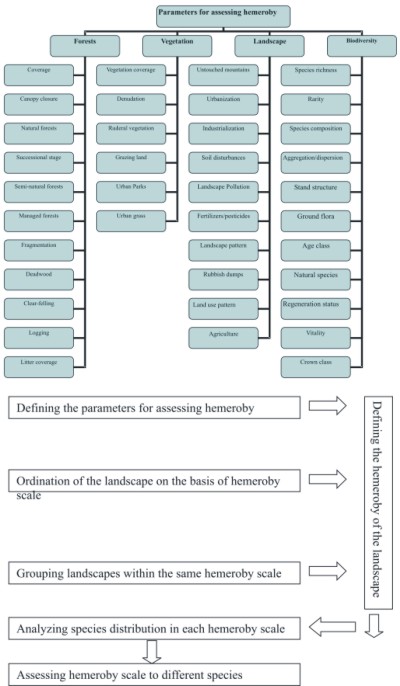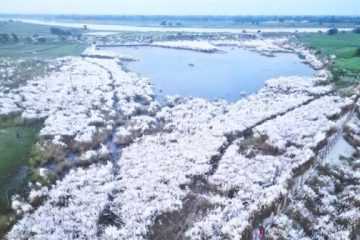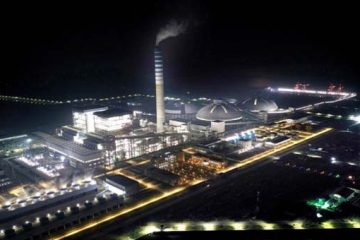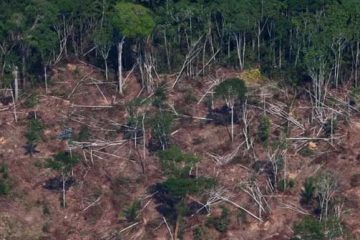Human Impacts on Nature
European hemeroby approach for appropriate measuring
Dr. Md. Mizanur Rahman
Nature conservation anchors a discourse that articulates a nexus of nature-culture-artificiality-stability-biodiversity. The concepts of human disturbances have been enjoying increasing popularity in the discussion of biodiversity conservation. Anthropogenic behaviour that harms nature” or “human activities contrary to nature” leads to unnatural conditions. The notions of pure naturalness are totally dogmatic and the present environmental conditions are the products of a plethora of human disturbances. Human activities are the result of evolution of the other life forms in the biosphere. The Homo faber (“man the maker”) plays the most significant role on the highly complex manipulations of the nature.
 Hemeroby approach
Hemeroby approach
The term hemeroby derives from the Greek hemeros (cultivated, modified and disturbed) and this work is not found in English dictionary. At first a Finnish botanist Jaakko Jalas introduced this term in ecology to classify the plant species based on the share in neophytic species. German ecologist Hubert Sukopp (1966) expanded this term to measure the degree of naturalness and human impact on the environment. Another German ecologist Ingo Kowarik (1990) defines hemeroby as “the sum of the effects of past and present human activities on the current site conditions or vegetation, which prevent the development to a final stage”.
Europe has developed two main concepts for assessing the human impacts on habitats and vegetation: 1) historical concept (comparison of vegetation and habitat with pristine nature/untouched nature) and 2) status-quo oriented concept (This is the hemeroby concept, which assesses the human impacts and naturalness of a site without reference to former conditions). It is obvious to have knowledge on the improvable “primal condition” of the nature to define “naturalness”, “close to nature” “unnaturalness” and “human impacts” in accordance with historical concept. In this concept, “back to nature” means no more return than the pre-human (unknown) condition of the nature; The hemeroby concept has the advantage of excluding the dogma of pure natural (pre-human and unknown) conditions. The hemeroby approach is an essential tool for the ecological analysis.
The levels of hemeroby are measured on the basis of the proportion of neophytic and therophytic species, soil characteristics and land use patterns. There are seven levels of hemoroby which determine the degree of human impacts on a specific landscape.
Actually the hemeroby scale depends on the vegetation coverage and the properties of habitats. Natural plant communities are sensitive to changes in the hemeroby scale (intensity of anthropopression).
How to use in Bangladesh
Most of the European countries use the hemeroby to study the dynamics of plant communities in urban areas and to assess the human disturbances on different habitats. It describes the spectrum of severity of human impact for any particular plant community. The writer assessed the dynamics of Oak dominated natural forest reserves of Central Europe. He found 12.8% increased stand volume and 8.6% deadwood (indicator of naturalness) volume in 10-year pure natural conditions (Botanica Helvetica, 119:2329). Those natural reserves are ahemorobic (disturbance free) habitats, which is an illusion in our country.
The levels of human impacts have never been determined in our country. The writer measured the human impacts on the biodiversity of Dipterocarpus forests of Bangladesh during his PhD programme (Rahman et al. 2007, Rahman et al. 2009, Rahman and Vacik 2009) giving attention on the floristic composition and species richness, and ignoring the habitat and landscape conditions. He developed a very new and self-explanatory disturbance index based on the diversified disturbance gradients. These works can be the baseline of hemeroby assessment in Bangladesh.
To measure the scale of hemeroby it takes qualitative and quantitative assessments of human impacts on the flora and habitats. It has been argued that quantitative assessment is highly complex and costly. The emphasis on qualitative assessment is understandable and cost effective as hemeroby is a new concept that should first create support among crucial stakeholders, generate knowledge in order to be able to set priorities, and disseminate information to the general public to increase awareness.
The parameters differ from landscape to landscape, ecosystem to ecosystem and country to country based on human impact and habitat conditions. The writer focuses a set of parameters from the viewpoint of our perspectives (Figure 1).
The qualitative value of each parameter can be compiled in a matrix and thereby the different levels of hemoroby can be assessed (Figure 2).
How to decrease severity of human disturbances
On the basis of hemeroby assessments the following conservation strategies can be adopted: a) establishing at least 01 hectare pure natural habitat within each protected forest to promote ahemerobic condition, which will serve the reference value of naturalness; b) building bridge between human and nature by removing the ideology from and the demystification of the phenomena of nature and human; c) pragmatic-sustainable development; d) maintaining equilibrium between the stability and sustainable productivity of the environment; e) adopting scientifically and economically congenial strategies for biodiversity conservation; f) protecting habitat, landscape, biodiversity to attain the goals that were outlined in the “Convention on Biodiversity”; g) ecosystem management through participation of all stakeholders; h) creating public relations for nature conservation; i) minimizing the use of chemical fertilizers; j) prohibiting the application of long residual and acute toxic pesticides; k) protecting habitat fragmentation; l) increasing urban vegetation; m) establishing more botanical park in each city and town; n) minimising soil pollution; o) afforestation, reforestation and vegetation in the denuded area; p)stopping clear felling; and q) eco-friendly garbage management.
Dr. Md. Mizanur Rahman is a biodiversity specialist, NDC, Jhalakathi Collectorate.
E-mail: mizan_peroj @yahoo.com





